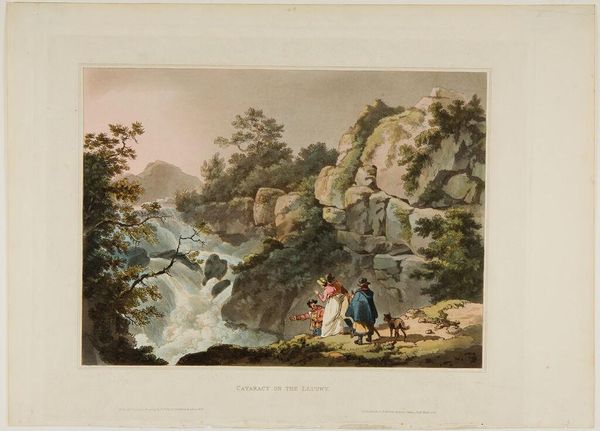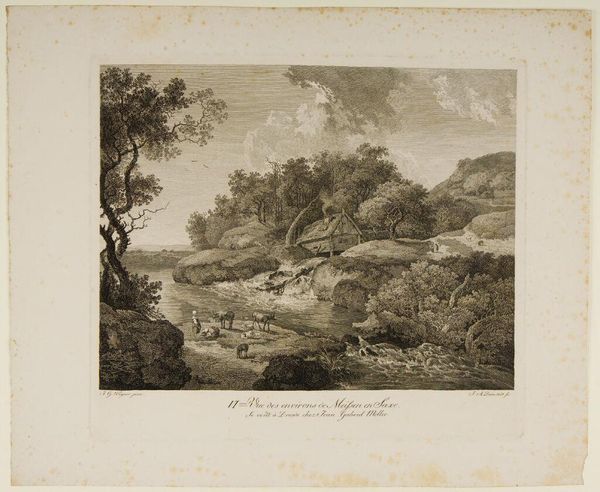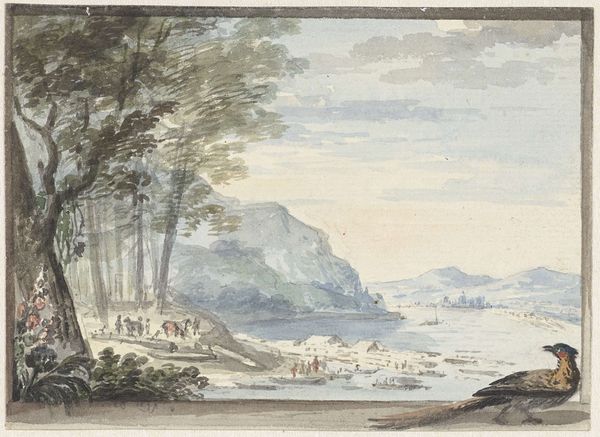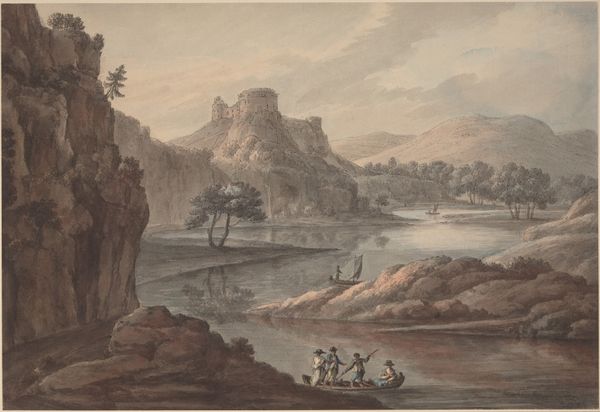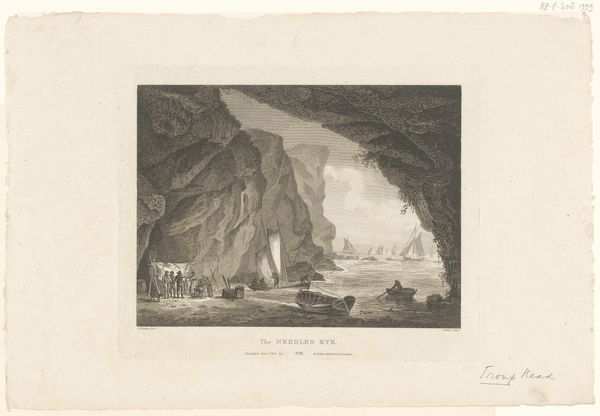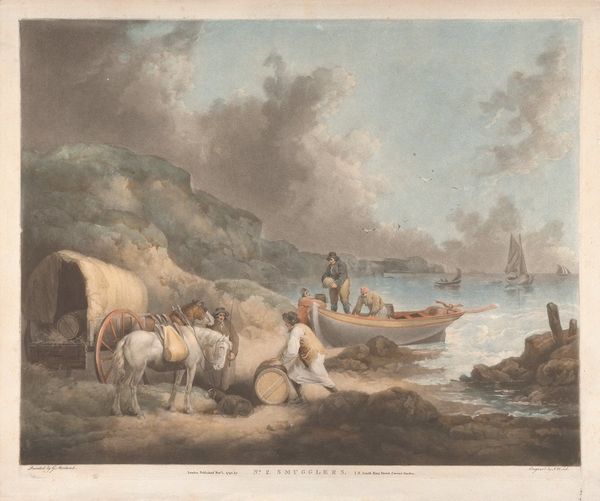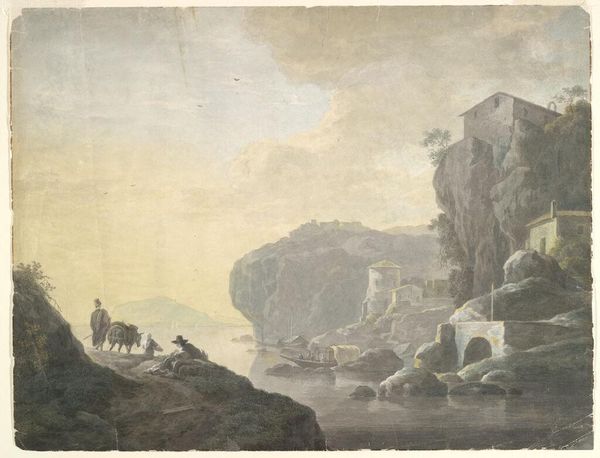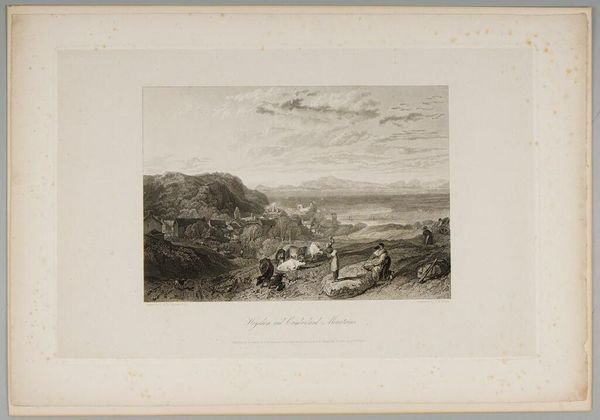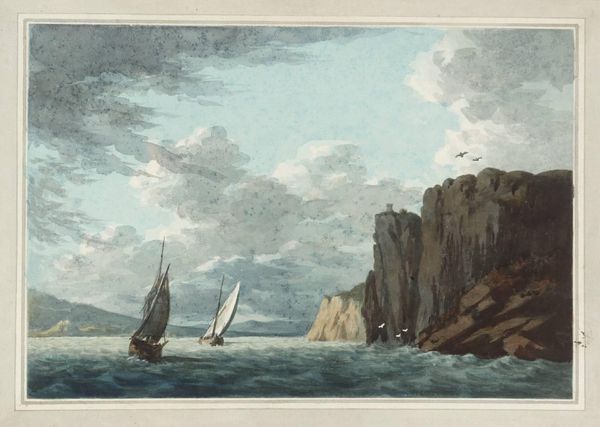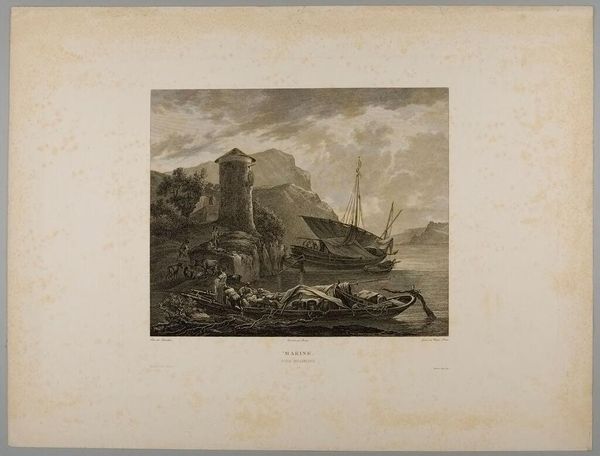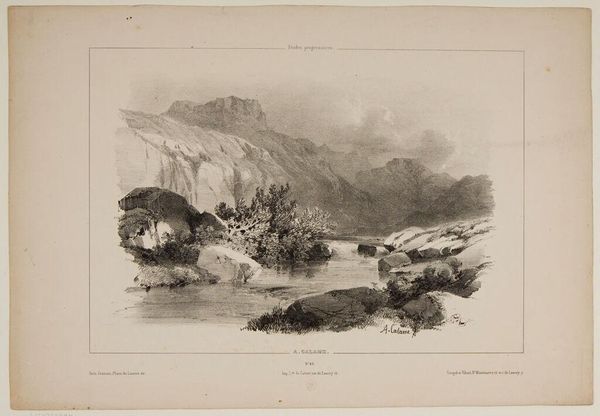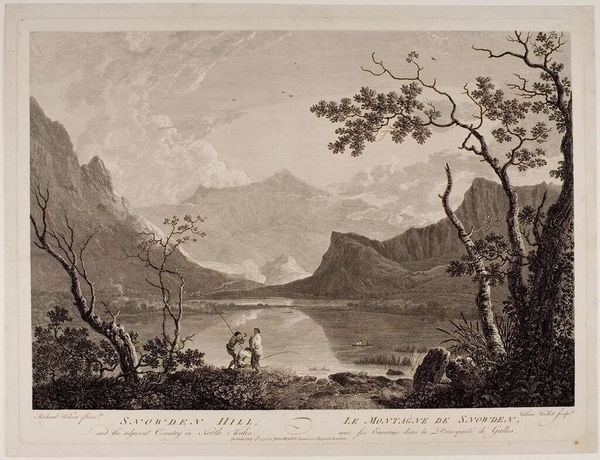
Copyright: CC0 1.0
Curator: William Pickett's "Lake of Windermere" presents a picturesque scene, doesn't it? My first impression is one of pastoral calm, almost staged. Editor: Indeed. There’s a deliberate arrangement of elements. Note the figures on the shore; they seem to be posed as if for a family portrait, evoking a sense of leisure. The lake itself mirrors the tranquility of the figures. Curator: Absolutely, and that very sense of staged leisure speaks volumes. It's not just about representing the landscape but about the social ideals associated with it. Windermere, even then, was becoming a tourist destination, a place of refined leisure. Editor: The composition clearly invites viewers to partake in that vision, doesn't it? The tree on the right acts almost as a frame, inviting us into this idyllic scene. It's a constructed paradise, not a wilderness. Curator: Precisely! The artist uses specific visual cues—a well-dressed family, a calm lake—to reinforce notions of status and leisure, shaping how the public perceived and consumed these landscapes. Editor: A fascinating interplay between nature, society, and representation. It prompts one to reconsider the political undercurrents of landscape painting. Curator: It certainly does. This is more than a lake; it's an ideal.
Comments
No comments
Be the first to comment and join the conversation on the ultimate creative platform.
